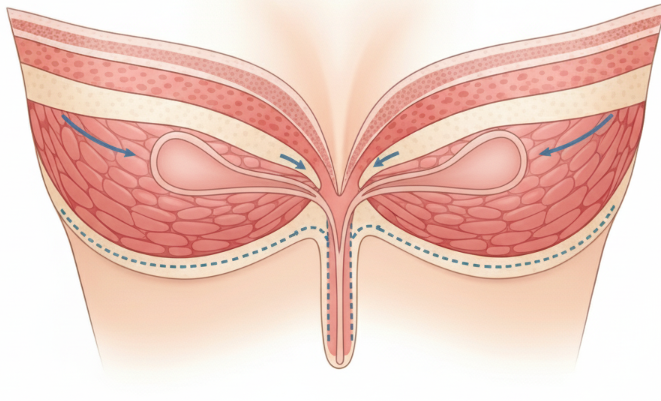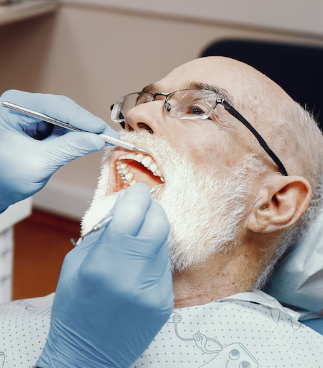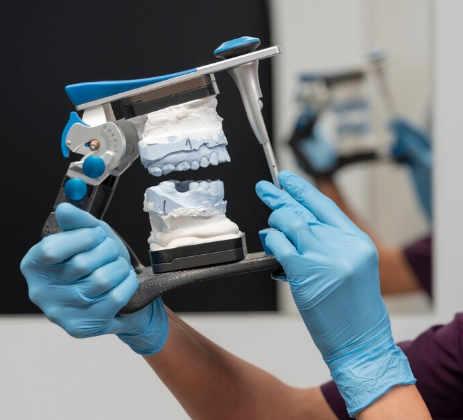Treatment Overview
A Mini Tummy Tuck with Umbilicoplasty is a combined cosmetic procedure that improves the lower abdomen by removing small amounts of excess skin and tightening abdominal muscles, while also reshaping or repositioning the belly button (umbilicoplasty) for a natural, youthful look. Unlike a full abdominoplasty, the mini version involves a smaller incision and shorter recovery, making it ideal for patients with loose skin or bulges below the navel.
In Korea, surgeons are highly regarded for their precision in body contouring and belly button aesthetics, often combining the mini tummy tuck with liposuction, muscle repair, and advanced scar-minimizing techniques. This ensures a smooth, sculpted lower abdomen with a refined, natural-looking belly button.
Purpose & Benefits
- Lower Abdomen Contouring: Removes small skin folds and excess fat below the belly button.
- Muscle Tightening: Repairs mild abdominal muscle separation (diastasis recti).
- Belly Button Refinement: Creates a natural, outward-facing, youthful navel.
- Minimal Scarring: Smaller incision compared to full tummy tuck.
- Confidence Boost: Enhances body appearance in swimwear, fitted clothing, and everyday life.
- Combination-Friendly: Often paired with liposuction or skin tightening for enhanced results.
Ideal Candidates
- Men and women with mild to moderate skin laxity limited to the lower abdomen.
- Patients with a small belly pooch or bulge that diet and exercise don’t resolve.
- Individuals seeking belly button correction (inverted, enlarged, or irregular shape).
- Adults in good health and stable weight.
- Non-smokers with realistic expectations about scars and recovery.
Possible Risks & Complications
- Temporary swelling, bruising, or soreness.
- Mild discomfort at incision or belly button site.
- Small risk of asymmetry or contour irregularity.
- Visible scar along bikini line (fades with time).
- Rare risks: infection, fluid buildup (seroma), delayed healing.
Techniques Used
- Mini Tummy Tuck Incision: A short horizontal incision just above the pubic line (concealed under underwear or bikini).
- Excess Skin Removal: Small folds of lower abdominal skin are excised.
- Muscle Repair (Optional): Mild diastasis recti corrected with sutures.
- Umbilicoplasty: Belly button reshaped, repositioned, or corrected for natural appearance.
- Liposuction (Optional): Used to refine waistline or lower abdomen for smoother contour.
- Scar-Minimizing Closure: Fine layered sutures to reduce scar visibility.
Recovery & Aftercare
- 3–5 days: Mild soreness, swelling, and tightness improve.
- 1–2 weeks: Resume desk work and light daily activities.
- 2–3 weeks: Stitches removed (if non-dissolvable).
- 3–4 weeks: Light exercise permitted (avoid core workouts early).
- 2–3 months: Final contour and belly button refinement visible.
Aftercare Guidelines:
- Wear a compression garment for 3–4 weeks to support healing.
- Avoid strenuous exercise and abdominal strain during recovery.
- Keep incision and belly button clean and dry.
- Follow scar-care program (silicone sheets, creams, or laser therapy).
- Attend follow-ups for contour and scar evaluation.
Results & Longevity
- Flatter, smoother lower abdomen.
- Natural-looking, outward-facing belly button.
- Smaller, discreet scar hidden in bikini line.
- Long-lasting results with stable weight and healthy lifestyle.
- Enhanced self-confidence in clothing that reveals the midsection.
Treatment Process in Korea
1. Consultation & Planning
- Surgeon evaluates abdominal skin, muscle tone, and belly button shape.
- Personalized plan created, often with 3D imaging preview.
2. Surgery Day
- Performed under general anesthesia or local with sedation.
- Short incision made above pubic line; skin and tissue adjusted.
- Belly button reshaped or repositioned (umbilicoplasty).
- Optional liposuction for waist and lower abdomen.
3. Post-Operative Monitoring
- Compression garment applied immediately.
- Most patients discharged the same day or after 1 night.
4. Follow-Up & Refinement
- Follow-up visits at 1 week, 1 month, and 3–6 months.
- Scar management or refinements offered if needed.
Why Korea is a Top Destination
- Surgeons skilled in mini tummy tuck + belly button enhancement.
- Clinics offer scar-minimizing sutures, lasers, and RF scar refinement.
- Personalized plans with 3D body simulation.
- More affordable compared to Western countries.
- International-friendly clinics with multilingual staff and VIP aftercare packages.
Cost Range
The cost of Mini Tummy Tuck with Umbilicoplasty in Korea depends on the extent of skin removal, belly button correction, and clinic reputation.
Estimated Pricing:
- Mini Tummy Tuck Alone: USD $4,000 – $6,000
- Mini Tummy Tuck + Umbilicoplasty: USD $5,500 – $8,500
- With Liposuction (Waist/Abdomen): USD $7,000 – $10,000
- Premium Clinics (3D imaging + scar-care + VIP aftercare): USD $9,000 – $12,000
Additional Costs:
- Consultation & imaging: USD $100 – $300
- Compression garments: USD $150 – $250
- Scar management add-ons: USD $200 – $600
- Medications & aftercare: USD $200 – $400
Popular Clinics
- Banobagi Plastic Surgery (Seoul): Experts in mini tummy tuck with natural belly button design.
- ID Hospital (Seoul): Known for combining abdominoplasty with umbilicoplasty.
- JK Plastic Surgery Center (Seoul): JCI-accredited, premium abdominal contouring services.
- View Plastic Surgery Clinic (Seoul): Specialists in scar minimization and belly button aesthetics.
- JW Plastic Surgery (Seoul): Leaders in tummy tuck and belly button reshaping for balanced results.




